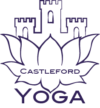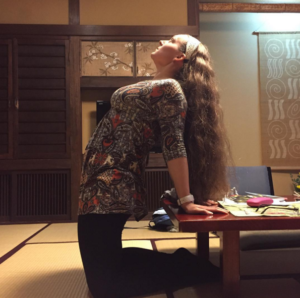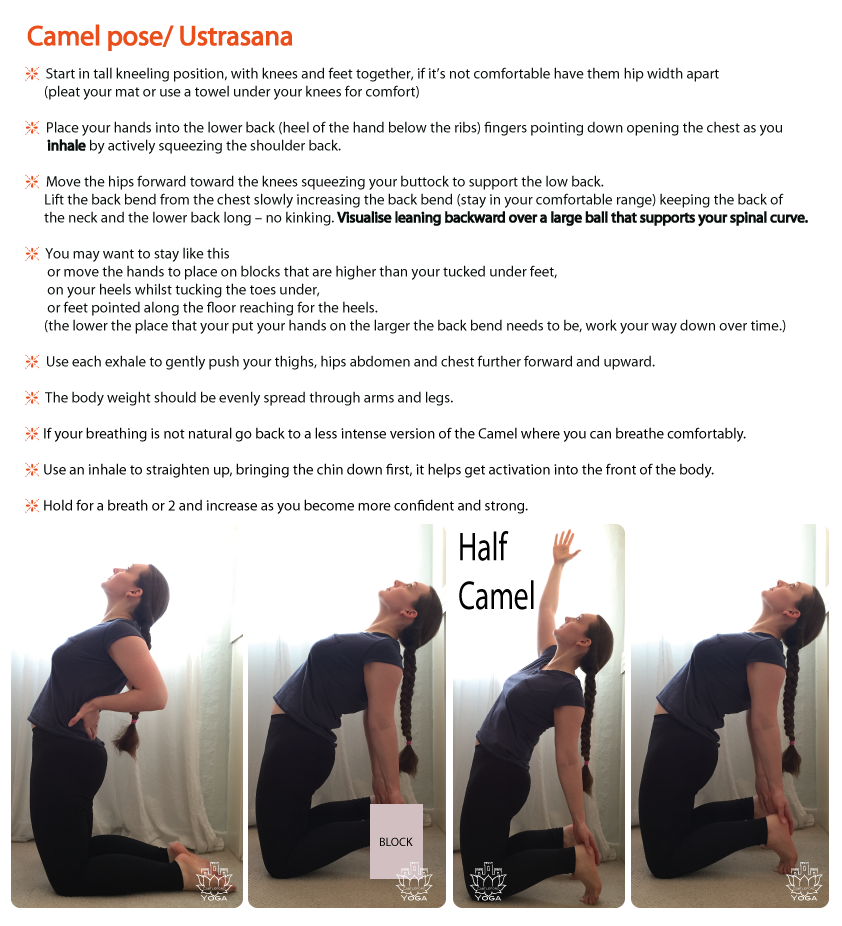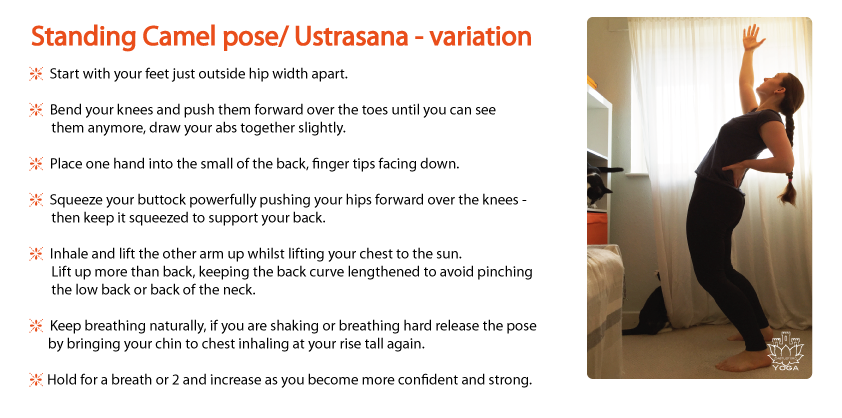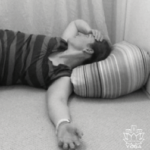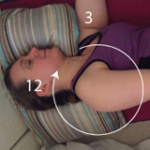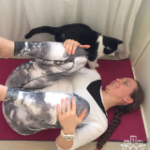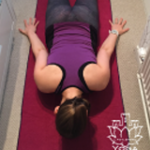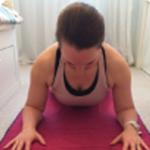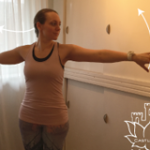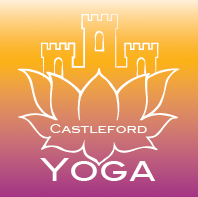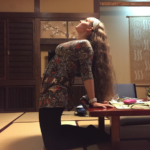
Open up the whole front of the body by extending backward – essentially a counter pose “Pratikriyasana” to hunched sitting.
I love the versatility of the Camel pose/ Ustrasana, you can do it standing or kneeling, with one arm up or both back, with blocks, there are so many options. I have used this pose during my long flight to Japan on the plane (standing) and afterward at the Ryokan (traditional Guest House) to relive my achy back from sitting in those awful seats on the plane and on trains. I was surprised how well I did this time round, managing my volatile back and avoiding chronic pain triggered from sitting and not moving for too long just with the help of a couple of yoga poses.
The Camel can help anyone who has a desk job or has to drive a lot for a living to keep the back healthy and strong and open up the hips that are bent the whole time that you are sitting. Sitting causes the hip flexors (muscles that bring the knee to chest) to shorten over time which makes it harder to do back bends once they are tight and short, as well as changing your low back curve to a less favourable flat back. Being desk bound also affects our upper body alignment, the shoulders often slouch forward, the head sticks forward to get closer to what we are looking for, all of which create tension in the base of the neck and across the upper back and shoulders; at worst case, you end up with a dowager’s hump (a prominent meaty hump at the base of the neck/ upper back) which is due to the vertebra not being stacked in the ideal way.
See if you can make your back more comfortable during your working day by taking a Camel pose several times a day or maybe even every hour. You might be going home ready for doing things that your normally would skip because you feel achy and tired.
Camel pose/ Ustrasana
Benefits of this exercise:
– stretches the ankles, front of thighs, hip flexors (iliopsoas), abdomen, chest, front of the shoulders and neck
– strengthens glutes, back extensors, abs, hamstrings, shoulder retractors and neck muscles
– stimulates spinal nerves
– stimulates abdominal organs, lungs, thyroid gland and kidneys
Outcome:
– improves mobility of the spine
– increases strength of the spinal erector – the muscles that keep you upright
– can improve posture – correcting flat low back through opening the hips and rounded shoulders through opening the chest
– frees tension and energy flow in the abdomen and pelvic area
– beneficial for digestive complaints
– can help prevent future back ache
– alleviates fatigue and negative emotions, increasing zest for life
– helps open your heart to love and compassion for self and others
Contradictions/ Precautions:
– people suffering from acute low back, knee or groin injuries, high or low blood pressure and headaches. Anyone who had a hip replacement needs to consult with their surgeon.
Counter pose:
For standing Camel use Tadasana/ Mountain pose or a Forward fold/ Uttanasana.
For a kneeling Camel use a Child’s pose/ Balasana.
Affirmations or Mantras to go with this movement:
1) “I open my heart to give and receive love.”
2) “With calm faith, I open to the light.”
3) “I love and enjoy my body.”
4) “I value and respect my body.”
It’s a good idea to keep the hold of the pose short and repeat several times if you are doing it on the go. If you are practicing at home I recommend to warm the body first with some smaller back bends such as dynamic Sphinx, Cobra, Locust or Bridge pose – or you can just use the 10min healthy back sequence and tack the Camel at the end before taking Savasana.
Once you have finished your Camel practice, spend a short time in flexed position such as Forward fold or Child’s pose.
Take this full body opening pose to improve your back strength and posture over the next few days. If you can’t do any back bending during the day do one of the above options before you go to bed or first thing in the morning every day just for a couple of minutes or until you feel you had enough.
As you practice the Camel pose, you want to focus on letting the front or the body open whilst keeping just a little engagement in the abdominals to support the back. Take note on which part of the pose feels challenging? Pay attention to your breath.
This practice should not be painful, if you feel pain, stop. Continuing will cause the muscles in the area to tighten to protect you from injury or aggravation. (I know I say this every time but I know everyone needs reminding of this as we always forget that yoga is not about pushing for achievements.)
It’s ok if this pose is not right for you today, try it again another time when you feel better. Above all, pay attention to your body, it communicates to you constantly – to get well you need to start listening and changing how you treat your body – value and respect your body.
Remember, you can pick one of the Affirmations above that resonates with you to repeat whilst you practice; this can help you stay focused and reprogram your cells and mind at a deeper level as you work on your sacral and throat chakra.
A couple of questions you can ask yourself:
Do you try to hide, control or suppress your feelings?
Are you able to free yourself of old family values, beliefs and commitments especially regarding relationships to responsibilities?
Are you able to express yourself, your beliefs your inner truth?
I hope you love the Camel and it’s benefits as much as I do and use it to help you keep your body tall and strong.
If there is anything you would like to know more about or would like to address, drop me an email and let me know.
I love hearing how you get on with these weekly poses.
Namaste
Marie
